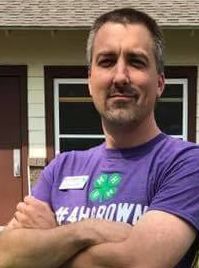January 25, 2022
Keep the Foundations and Drop the Canoes

Recently, I have been reading through Stephan Ambrose’ Undaunted Courage, reflecting on the life and journey of the Lewis and Clark expedition and the Corp of Discovery and how it relates to our Kansas 4-H Journey.
Lewis and Clark were commissioned by President Thomas Jefferson to explore previously unknown to them territory and try to find a navigable way from the Mississippi River, up and over the Rocky Mountains to the Pacific Ocean. They had a team, equipment, canoes and a keelboat to transport all they would need for their journey. Starting up the Missouri River was challenging, they kept notes, made discoveries, met people along the way who could help them on their journey. They had what they needed.
But as they pressed on, they soon realized their need for others and the need to learn from those that already lived on the land. They would need a guide to navigate what is ahead.
They kept pressing upstream knowing and believing there must be a way through to the other side. As they moved higher, the challenges grew also. At first, they could portage their canoes around obstacles and keep using the same tools that had gotten them this far in the journey. But as the elevation increased so did the challenge of carrying those canoes. Precious energy and valuable time were expended trying to transport those canoes in the hopes that this current obstacle could quickly be overcome and then they could be used to float to Oregon and the sea.
But upon facing what we would later call the Continental Divide, the Corp of Discovery had to make a decision. If they were going to continue, they would have to leave behind what they knew and the canoes that they had brought so far. They needed new tools, new transport and new guides if they were going to keep the Corp of Discovery moving forward.
Together they stepped forward leaving what they knew behind and kept climbing to the top of the dividing ridge. What did they see? Immense ranges of high mountains to the west with snow. In other words, more obstacles.
Author John Logan Allen writes (Ambrose, page 266), “Imagine the shock and surprise… to see neither the great river that had been promised or the open plains extending to the South Sea (Pacific Ocean).” Allen states the “geography of hope” had to give way to the “geography of reality.”
As I continue on this journey of 4-H Youth Development work, I feel like we have been on a journey of Discovery with substantive challenges that face us at every turn. It feels like once we cross a mountain pass, there seems to be a higher obstacle in front of us.
I would ask you to reflect on these questions as we consider what we are to be about in 4-H in 2022 and beyond.
1) Lean into your team. As the challenges increase, it tests our team. Together we can and must move forward.
2) What are the guides that we can learn from in our community about what will help overcome obstacles to involvement?
3) What are the canoes you need to drop? What "canoes" are taking up too much of my energies without the impact I need to see in 4-H? In other words, what are the practices or activities that need to change or even leave completely in order to use the limited energies we have in order to overcome the next challenges?
4) How can we help each other navigate and recalibrate our practices to the “geography of reality” as we encounter that some past practices will not yield the results we had known previously?
Let us focus together on three foundational practices central to our mission of 4-H Youth Development as we adjust to this “geography of reality:”
1) What? – THRIVE as the latest research that should inform our Youth Development practices in 4-H. Like any extension program, our organization should be integrating the latest science into our day to day practice. (Resources at https://helping-youth-thrive.extension.org/)
2) Who? – Diversity, Equity, Inclusion and Belonging professionalism that enables us to authentically engage our community, our families, and our youth right where they are. What youth does not deserve to have a 4-H Experience? All do. (resources at https://dei.extension.org/ and https://www.ksre.k-state.edu/employee_resources/dei/index.html)
3) How? – By embracing our Professional Competencies, we can adjust to changing environments with the confidence of our profession’s standards of professional excellence. (https://www.nae4hydp.org/general/custom.asp?page=4HPRKC)
Together, focusing on our foundational practices we can keep the Kansas 4-H Corp of Discovery moving forward! Navigating the geography of our communities' new realities we will continue to fulfill the Extension mission to empower youth, families, and communities to thrive.